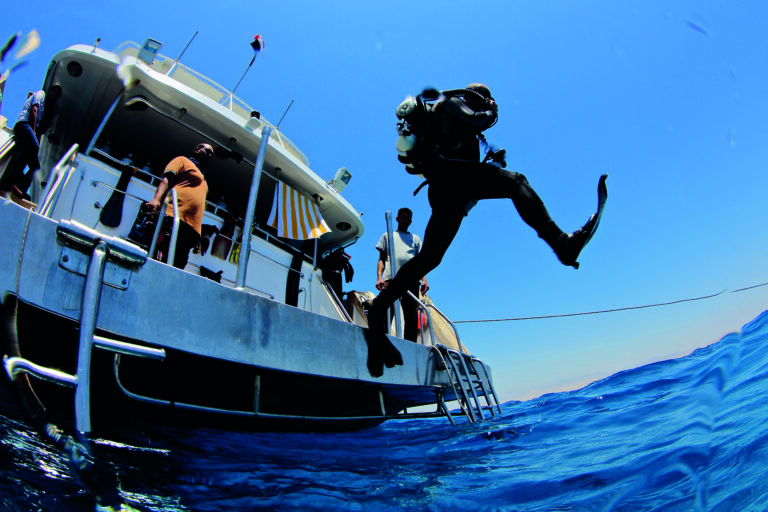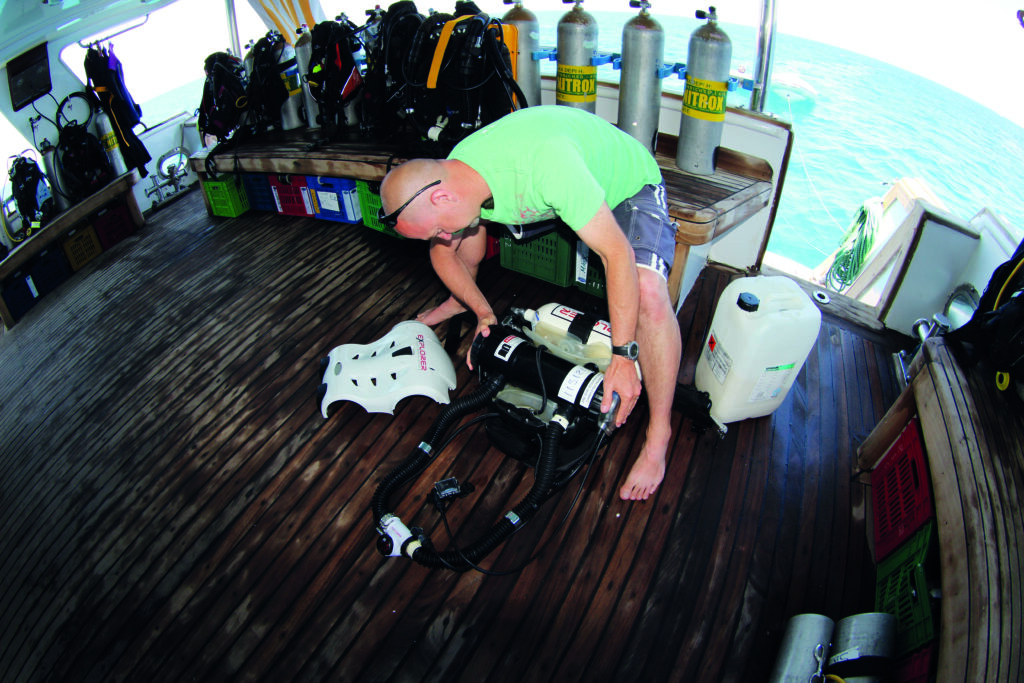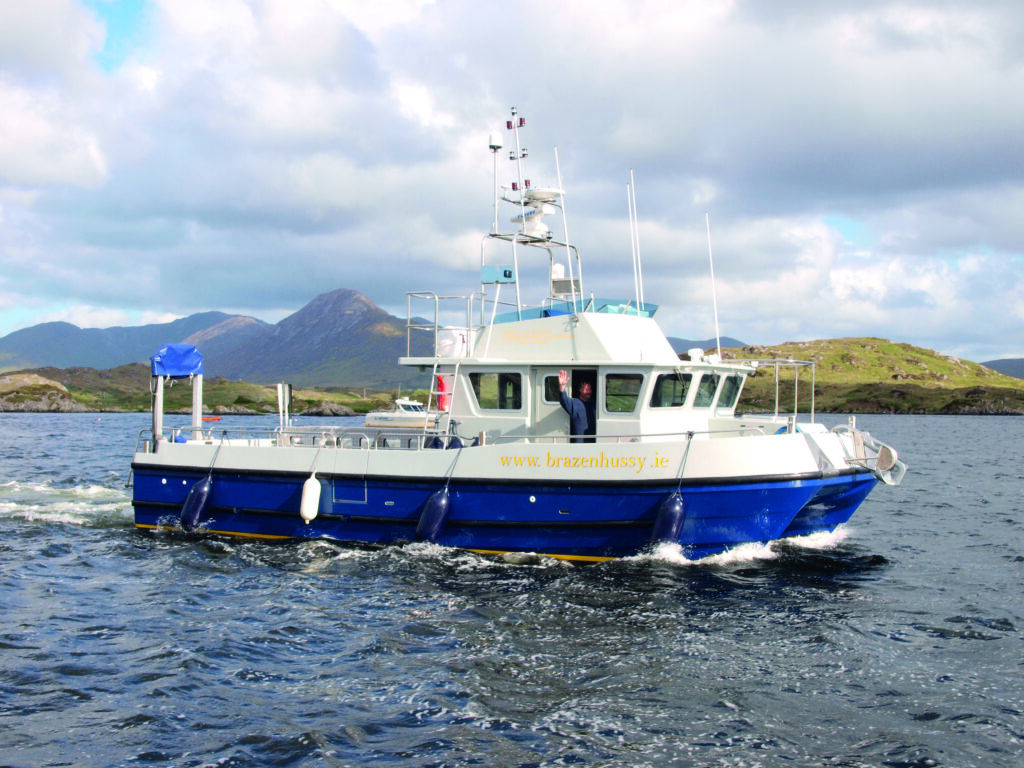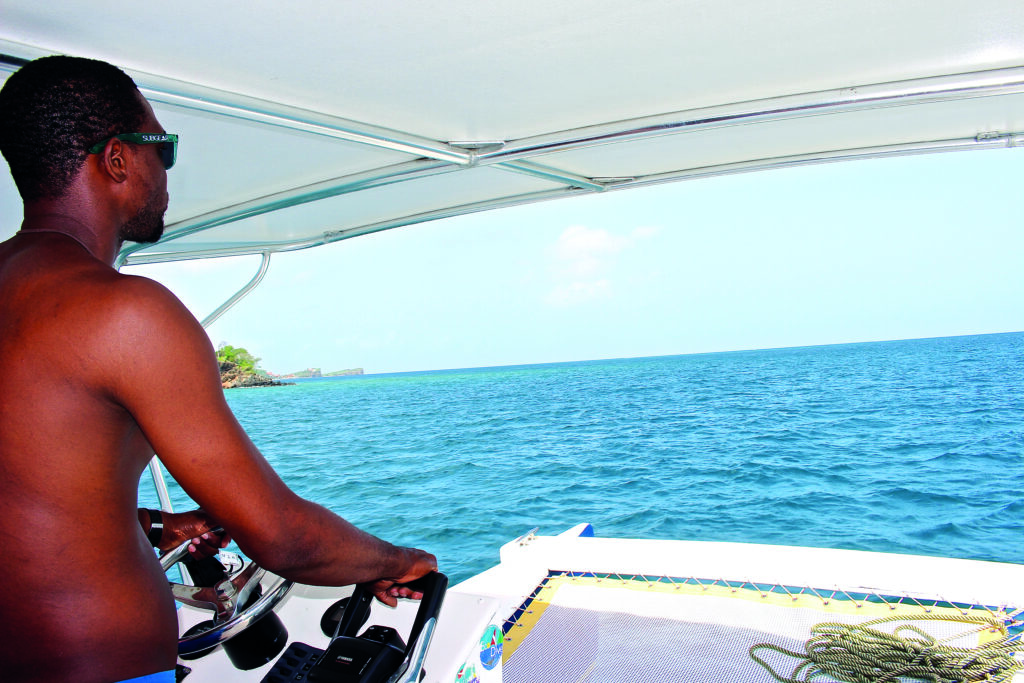Our panel of experts offer some useful advice on how to get the best out of the hardboat diving experience
We have already looked at RIB diving, so now we turn our attentions to hardboats. Stable, more spacious and with some creature comforts – toilet, galley for those essential teas, coffees and tasty snacks, and, in some cases, diver-lifts – hardboats can deliver you to dive-sites that are out of reach of smaller vessels.
Then there is the ultimate hardboat diving: on a liveaboard, where you stay, sleep and dine on board, and dive three, four or even five times a day.
Depending on the dive location and depth you don’t have to be an experienced diver to venture out on a hardboat. They offer a great way for newly qualified divers to get some decent dive-time under their weight-belt. However, there are some dos and don’ts, and the following pearls of wisdom from our agency experts will help you get the most from your hardboat diving days.
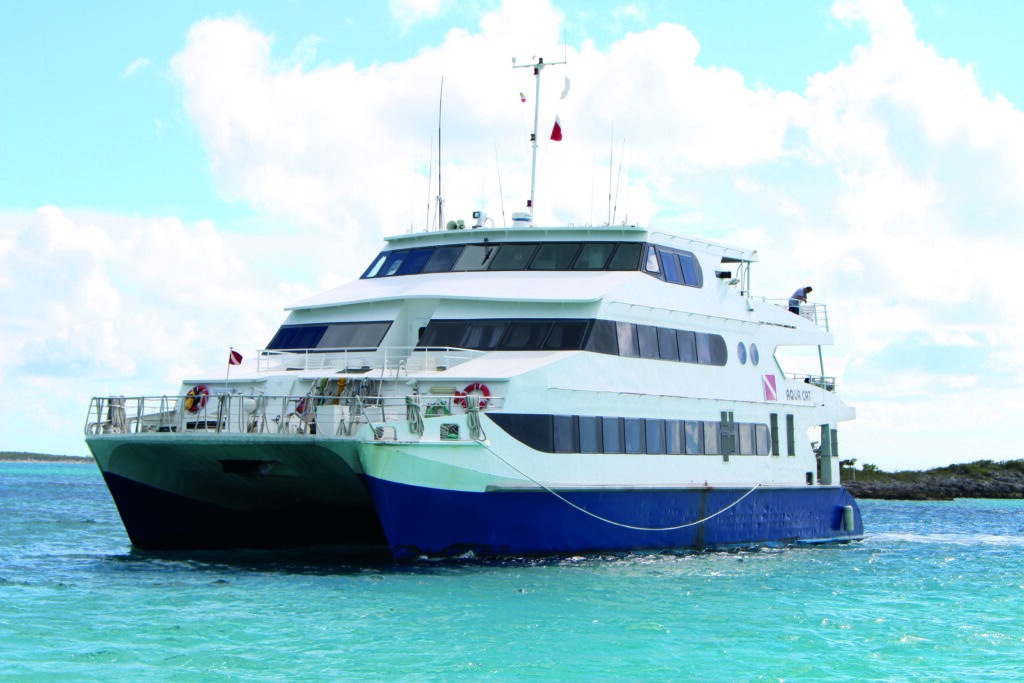
More than a water taxi
BSAC Advanced Instructor Alex ‘Woz’ Warzynski: “A hardboat provides a great platform for exploring dive-sites that are a bit more out of the way and not the more common regular sites. It’s tempting just to use a hardboat as a water taxi to take you to the old favourites but, with a bit of research, a bit of planning and the right team of divers, it can be a much more interesting prospect.
“Even if you are diving the regular sites, arriving with a bit of knowledge about the tides, weather and what to expect under water will help everyone on board enjoy themselves that little bit more.
“Coming on board with every bit of dive-kit you own could be tricky in the limited available space on a hardboat. I set up my kit the night before the trip and make sure everything works, then there are no surprises when you get on board, such as an empty cylinder or leaking reg. So far I’ve never missed a dive because of badly prepared kit.
“On arrival, I tend to leave the bag or box in the car, and just take everything to the boat ready to use. As a guide, if you’re single-cylinder diving you should be able to do this in one trip from the car.
“I find those big blue IKEA bags perfect for chucking the kit for the day into, slinging over a shoulder and walking to the boat. The only extras I take on board are normally lunch, a bottle of water and something to keep the sun off if we’re lucky with the weather.
“Fortunately I don’t get seasick but, because others do, that water also comes in useful if people are ill. There are the usual remedies of medication (Stugeron is OK, but there are meds that contain an ingredient that increases your chances of decompression illness, so please make sure you check).
“For divers who get hit hard, there are even some funky glasses you can wear that, although they make you look a bit silly, give your eyes an artificial horizon to prevent motion sickness.”
TDI’s Business Development Manager Mark Powell: “Make a reservation with a reputable dive boat or dive-shop. Don’t know one where you’re going? Do some research. You’d be surprised how much better your day will be when you have a trained, experienced crew and a highly organised boat.
“Look for a boat that carries emergency oxygen and ideally has a crewperson in addition to the skipper.
“Take care to pack your certification card and check any gear you’re taking with you. Make sure it is all in working order before you get on the boat. If renting gear, ensure that the correct gear is reserved before your arrival. When you arrive, check that the rental gear is as expected and works correctly.
“On the day of the dive, get up early and get to the boat early. You will be so much more relaxed and ready to enjoy the day if you and your gear are loaded and squared away before the mad rush.
“An early arrival might also give you a chance to chat with the crew and get to know them. It also allows you time to find a parking space, which is not always easy in some seaside towns.
“Once you get onboard, unpack your gear and start getting ready. That early arrival might help you to do that without being crowded. Try to keep your gear compact, and stow what you don’t need.
“Your dive-gear should fit under your bench seat and your BC set-up should not be all over the place. On smaller boats, set up your gear and stow whatever you don’t need to dive. Of course, if the crew tells you that there’s room, feel free to spread out and get comfortable.
Ask questions
“Talk to the crew and ask questions! If there is something you’re unsure of, or would like to know, just ask. The crew is there specifically to help you, to keep you safe and to make your day enjoyable. Never leave something unsaid that might cause you to worry.
“The more you know, the calmer you’ll be, and you’ll enjoy the day more. The more the crew knows about you, the more fun you’ll have. If you’re a new or inexperienced diver, make sure to let the crew know! If you may have trouble on descent, or if your safety-stop ascent is a little shaky, let the crew know.
“The more you tell them about your dive level, what you expect from the dive etc, the more fun you’ll have and the safer you’ll be.
“Know your dive comfort zone. If you’re an open water certified diver and the dive is planned for a wreck at 30m, let the crew know you’re not certified to that level. The crew should always be able to make accommodations for you. You should never dive past your training and certification!
“Be sure to listen to everything going on. Listen to the captain’s welcome message and listen to the crew’s briefing. Don’t talk to your buddies or fuss with your gear. Important safety messages and dive procedures are included in these briefings. Your fun and safety might depend on knowing what was said.
“There should be plenty of time before and after these briefings to take care of everything. And some of your questions might get answered before you even ask! And for your own sake and those on the boat with you, always follow crew instructions. The crew’s only goal is to make sure you’re safe while having an awesome, fun time.
“The trip is over. You’ll probably be briefed about the unloading procedure. You’ve had a great time and you’re back at the dock. Wait for the crew to secure the boat before you try to get off. Once your gear is off the boat, gather it up and get yourself squared away. Be considerate to other people when loading and unloading, and don’t leave cars blocking access while you unload.
“Remember to have fun! And let others know what a great time you had. A kind word and thank-you to the crew, the owners and a nice thank-you or review on social media, TripAdvisor etc is also always welcome.”
Etiquette to consider
Garry Dallas, Director of Training RAID UK and Malta: “You’ve finally got yourself booked on a charter hardboat or a luxury liveaboard. As you’re motoring out to the open ocean, there’s some etiquette to consider when it comes to hardboat diving.
“In many ways, it’s not dissimilar to RIB diving – you’re on a bigger vessel but safety is always key to enjoying your boat-diving experiences.
“Your skipper / tour-leader will always brief you thoroughly. Pay close attention – they want you to enjoy it too. Remember, just because you’re on a bigger boat and have more space, don’t spread your gear out more. There might be a lot more people who also need to get around you!
“Keeping your gear together reduces the risk of loss and damage. Simply manage your gear as you would do on a smaller vessel – others will appreciate it too and follow suit. Mark-up / personalise your gear to avoid any awkwardness. Make sure it is secured and that it won’t fall over should the boat pitch or roll.
“Be aware of slippery decks and deck-ladders when moving around the vessel, especially when barefoot. With larger groups diving, there’s usually a system for entering and exiting the water and stowing your equipment away for refills for the next dive. Listen carefully to these procedures to avoid kitting up a spent tank and the stress that ensues.
“If you suffer from seasickness, here are some tips for you: the eyes normally see the world that is still, while our body’s equilibrium sensors in our inner ears send signals of a moving environment to the brain. This confusion causes unrest in the body; then tiredness and nausea kicks in.
“Get plenty of sleep, avoid greasy foods and alcohol and take suitable seasickness tablets for divers. Keep busy or look at the horizon, stay in fresh air and don’t go on the top deck where there’s more roll. Stay close to the centre of the vessel or the stern, not the bow. Drink fresh water every 15 minutes and stay out of the sun. Try not to sleep, because this often makes it worse.
“Finally, make sure your equipment is tip-top before you get on the boat and never rush anything. Enjoy!”
GUE’s John Kendall: “As with any boat-dive, it’s best to have your equipment all set up and checked before you leave harbour. Try to arrive with plenty of time before the advertised ‘ropes-off’ time, and introduce yourself to the skipper.
“Ask the crew how they want the boat loaded, and remember that most UK hardboats take 10-12 divers, so even if it looks as if there’s plenty of space, this doesn’t mean that you should bring every last piece of diving equipment that you own. Just bring what you need.
“Big advantages of hardboat diving generally include the ability to make hot drinks, and also to travel to the dive-site out of the weather, but follow the skipper’s instructions about where you can and can’t go in a wet dive-suit.
“Finally, try not to block the toilet. Most marine toilets won’t deal with anything that hasn’t first passed through you.”
Best in the world
Vikki Batten, PADI Course Director: “UK skippers are some of the best in the world and are usually very knowledgeable about sea conditions and the dive-sites they drop you on. But you should also educate yourself. The PADI RNLI Distinctive Speciality Diver course was developed with the RNLI to educate divers about safety at sea.
“Listen to the briefing about entering and exiting the water carefully. Techniques might be very different to those you have experienced diving in other locations. If you don’t know why someone is telling you to do something, just ask. There will always be a good reason and it is usually safety-related.
“When you’re in the water, remain alert and focused. Stay aware of boats, buddies, buoys and lines – that makes it easier for the skipper and buddies to communicate with you if they need to, and for you to respond to any change in circumstances.”
That liveaboard feeling
Jonas Samuelsson, PADI Course Director: “My favourite hardboats are liveaboards, and it’s hard to explain the feeling when you’re departing from the harbour on the way to an amazing reef or wreck.
“Your day on a liveaboard consists of three favourite pursuits of mine – sleep, eat, dive and repeat. I love all kinds of diving, but the advantage of being on a liveaboard is that you are able to reach some of the most spectacular dive-sites… and the food, of course.
“Just be aware when diving on liveaboards to ensure that you discuss your certification and experience level with the dive operator so that it can give advice about which trip is most suitable for you.”
Emily Petley Jones, PADI Course Director: “One of the most challenging aspects of diving from a hardboat can be the exit. You should listen very carefully to this section in the briefing, because there are many variations as to what you should do when you’re leaving the water.
“If using a ladder, you should note what sort of ladder it is. If it is an open ladder (where there are no sides), you can leave your fins on to climb back onboard, and slide your feet in from the sides. If it is a closed ladder, you should remove your fins before you climb on.
“Make sure that you always have one hand on the boat, or a line connected to the boat, before you take off your fins!
“One of the most common concerns for skippers is divers crowding around the ladder. Always give each other space, and ensure that only one diver is on the ladder at a time and, more importantly, that the base of the ladder is clear in case they fall back into the water.
“Some ladders have a tendency to pivot as the boat rocks in the water, so try to get your weight on the ladder as soon as you can, because this will help to stop it from swinging quite so much.”
’George always sits there’
IANTD’s Kieran Hatton: “Divers are like gas – they expand into the space they have available! This is fine when you’re the only diver on the boat, but something of a problem when you’re with nine other like-minded individuals.
“Diving offshore requires a degree of organisation and team planning. When boarding a boat, people will find their seat, and this might be on a ‘George always sits there’ or a first-come, first-served basis (mine is the one by the gate). Either way, once you have your seat, best to see if you can stick with it for the week.
“Different trips are going to require different equipment but, much like when you’re diving, take only what you need because space will always be limited. If diving on a liveaboard for multiple days, it will be a good idea to take spares and tools.
“If a long run out for a single dive at slack water is the order of the day, there is little point in this. If you’re not ready to go when the skipper says go, the dive window will be closed anyway.
“Be ready before you leave the quay, because trying to fix a rebreather while travelling at 20 knots is not a lot of fun.
“Bring food – food to share (don’t forget about the veggies). A long run back to shore is better on a full stomach.
“Last but not least, buy the skipper and crew a pint – it is long day out and too often a thankless task looking after divers. Oh, and did I mention it: Don’t sit in my seat!”
Photographs by Mark Evans
Also on Divernet: Deploying A DSMB, Which Safety Gear To Carry, Buying Your Own Gear, Packing Gear For A Dive Trip, What To Check Before Diving, Night Diving, Developing Core Skills, Coldwater Diving, Caring For Diving Equipment
